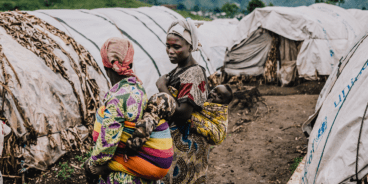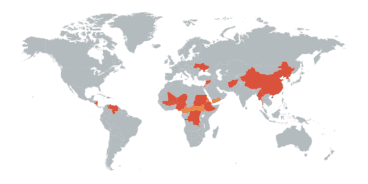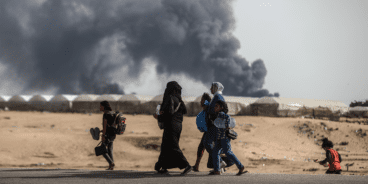
Rwanda, Syria and the Responsibility to Protect
Op-ed by Dr. Simon Adams in the Huffington Post
At the recent “Friends of Syria” meeting in Turkey, Rwanda’s Minister of Foreign Affairs, Louise Mushikiwabo, declared that despite the distance between Damascus and Kigali, “Rwanda and Syria share the same experiences.” She denounced the killing of innocent people by the Syrian government and asserted that, “the responsibility to protect” was “critical for the survival of the community of nations.”
The timing was significant. Eighteen years ago this week Rwanda descended into the quickest and bloodiest genocide since the Holocaust. In just 100 days between April and July 1994 an estimated 800,000 Rwandans were murdered. Most victims were killed with machetes, clubs or knives. Bodies piled up at the side of the road and in churches and schools where people had come for protection. The genocide ended not because of foreign intervention, but because a rebel army eventually succeeded in overthrowing the “Hutu Power” regime.
I’ve had several opportunities to visit Rwanda and interact with both survivors and perpetrators of the genocide. In doing so I saw evidence of every cruelty it is possible for one human being to do to another. Inside a desecrated church at Nyamata, where several thousand were killed, I met a young man named Charles. A boy of eight at the time of the massacre, he told me how his teenage brother had hidden him amongst the corpses, saving Charles’ life at the expense of his own.
In April 1994 when Charles’ family was being murdered, the world barely noticed. That same month South Africa experienced the historic election of Nelson Mandela as the country’s first democratic president. More than 2,500 journalists from around the world came to celebrate the death of apartheid. No more than twenty journalists were present to record Rwanda’s horror. To Rwandans it was as if no one cared that they, and their country, were being cut to pieces.
Beyond the media, the role of countries with the power to actually make a difference was shameful. The UN Security Council failed the people of Rwanda. International inertia created an enabling environment for the génocidaires. Eighteen years later, Charles’ question — “where was the world?” — still gnaws at one’s soul.
The doctrine of the Responsibility to Protect (R2P) was first developed in the aftermath of Rwanda’s genocide and unanimously adopted at the UN World Summit in 2005. The basis of R2P is that all humans have a right to be protected from genocide, war crimes, ethnic cleansing and crimes against humanity. If their own government fails them, the international community is obliged to act.
Last year R2P saved lives in Libya and Cote d’Ivoire. In the midst of the Libyan intervention, President Kagame of Rwanda wrote that, “our responsibility to protect is unquestionable — this is the right thing to do; and this view is backed with the authority of having witnessed and suffered the terrible consequences of international inaction.”
One can not read those words today without thinking of Syria. There is no doubt that the bitter debate over whether NATO overstepped its Libya mandate has hampered efforts at the UN to consistently apply all the preventive, mediated and coercive elements in the R2P toolkit. It also has to be pointed out that Russia and China have acted on the Security Council as several Western powers did in 1994, undermining an effective response.
Over the last year UN inaction has emboldened Assad in his war against his own people. The Syrian security forces have shifted from shooting down demonstrators to cleansing entire neighborhoods of populations deemed to be disloyal. The collective punishment of Homs is only the most glaring example of the Syrian government’s crimes against humanity.
From the kaleidoscope of death in Rwanda there is one image that particularly haunts me. I witnessed the exhumation of a mass grave linked to one of the most notorious events of the Rwandan genocide — the abandonment by Belgian UN peacekeepers of more than 2,000 Tutsi who had taken refuge in a school on the outskirts of Kigali, the École Technique Officielle. Almost all were killed. This was later described as the most shameful event in the entire history of the United Nations.
As I watched tired workers exhuming skeletons I saw a man pulling on a light cotton dress — freeing it from the mass grave. He placed it carefully on the ground for a proper reburial. The dress was bright and cheerful, clearly belonging to a young woman.
We will obviously never know, but what did she think on the morning of April 11, 1994 as she observed the UN peacekeepers departing and watched the Interahamwe readying their machetes? Is it possible that she may have thought, “where is the world?”
This is a question we have seen Syrians scrawl upon crude placards in Homs and elsewhere. It is a question that the UN is obligated to answer. And while the diplomatic mission of Kofi Annan must be vigorously supported, the time has arrived to begin contemplating other measures. If Annan’s mission fails — if Assad continues to murder his own people — then history will not forgive further prevarication.
Related Content


